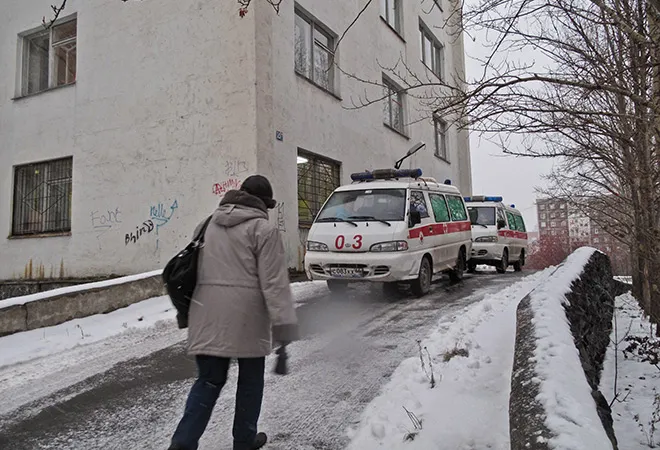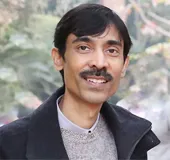
The public health situation in India could be said to be alarming. Generally, people are facing difficulty in obtaining proper healthcare services. Deficiency of good services has several negative effects on the society.
The government of India and international organisations (such as WHO, UNDP) have set health goals and are working towards their achievement. However, a favourable impact of the many initiatives is yet to be seen. The present conditions call for reviewing and reforming current practices followed in providing healthcare services.
Multiple factors are responsible for determining the health condition of a person. Timely access to proper health facilities and services is an extremely important component.
In this respect, densely populated cities of India present a complicated situation. A very high demand for services from various sections of the society creates a tremendous pressure on government hospitals and dispensaries, because these provide services at subsidised rates. This results in the occurrence of a chaotic condition. Many-a-times, large number of poor people have to wait for days outside major government hospitals (like AIIMS, Safdarjung) to receive medical treatment.
To meet the high demand, private and informal institutions have mushroomed over the years. But the doctor's consultancy fee and the cost of medical tests is high. Further, many institutions offer sub-standard services despite the high price.
City governments in India can learn valuable lessons in healthcare delivery from the city government of Moscow. The increasing use of digital technologies in key sectors is transforming the way Moscow functions today. Similarly, India could also exploit the tremendous potential offered by new technologies for the welfare of people.
Till five years ago, patients had to wait for several days to get an appointment with a doctor in a Moscow government health institution. When they did, many were dissatisfied with the quality of treatment received.
The city government invested substantial amounts for healthcare development and took several steps to ensure that every person receives good services in a time bound manner.
Moscow's Healthcare Department is closely working with the Information Technology Department since 2011 to achieve the goal of providing high quality citizen services. In the past five years, state-of-the-art medical equipment was purchased, numerous programmes and simulation models were developed to improve professional skills of doctors, and a web-based platform, namely Integrated Medical Information Analytical System (IMIAS) was created.
By July 2016, all the 660 government outpatient clinics situated in various parts of the city, 23,600 medical workers, and nine million patients (70% of Moscow residents) came on the IMIAS platform, and work is in progress to integrate the government hospitals.
The IMIAS monitoring centre has become a key tool of strategic management of the capital city's healthcare system. Based on facts and data generated, the outpatient clinics observe and distribute the workload uniformly among specialists. For health professionals, it means quick access to required information. The healthcare department observes trends and solves issues on all levels (city, district, outpatient facility). Availability of live data and reliable information is useful in making the best decisions. Similarly, the government monitors availability of outpatient medical services online.
Today, the healthcare situation is being monitored round the clock with the help of video cameras installed in every clinic. In the central control room, the monitoring staff observes the activities of every single patient and doctor in each clinic. For example, at what time doctors come to their rooms, how much time does a patient spend in waiting to meet a doctor, how many patients a doctor has appointment with, what is the daily schedule of each doctor. Statistics show 70% patients get to see a doctor within 15 minutes of their appointed time, and the waiting lists for self-made appointments with doctors have been cut by half on an average.
A patient feedback system is also created to know their opinion on quality of work, treatment received, cleanliness of the clinic, etc. Data compiled by the monitoring centre show 90% patients satisfied with medical services received.
Patients do not have to pay any fee for availing government healthcare services. Instead, the clinics receive full financing from medical insurance and the budget (federal, regional, and municipal).
Muscovites are finding the new online system extremely helpful in fulfilling their healthcare requirements. It allows them to find the nearest clinic, book appointments, obtain prescriptions, sick leave certificates, and a referral for diagnostic tests. Everyday about 35,000 people use the online system. Offline options are also available to schedule a doctor's appointment.
Thus, the measures are helping in various ways, including generation and processing of authentic real time medical data for monitoring government healthcare system and medical organisations, realtime surveillance of health institutions/services, optimisation of clinics'/medical workers' load (i.e., reduced queues to see a doctor, reduced load on front desk personnel), maintenance of electronic medical records of patients, patient flow management, issue of electronic prescriptions, etc.
Further, the online system ensures transparency and efficiency in medical practices. For example, doctors cannot submit financial claims for fake appointments, which was a common practice previously. The entire effort of the government is to ensure that doctors pay complete attention to the problems faced by the patients. Savings are seen in the form of time taken to issue one prescription (reduced from 6 to 1 minute), paper sheets saved per year (31 million), roubles saved per year (RUB 2.96 billion or INR 3.4 billion). The manual input errors have also reduced.
Initially, there was resistance from the doctors, nurses, paramedical staff in switching over to the digital platform. Slowly, the benefits were understood. Organisation of awareness and training programmes facilitated the transformation process.
Information on Moscow is based on author's visit to the Moscow Department of Healthcare.
The views expressed above belong to the author(s). ORF research and analyses now available on Telegram! Click here to access our curated content — blogs, longforms and interviews.




 PREV
PREV


